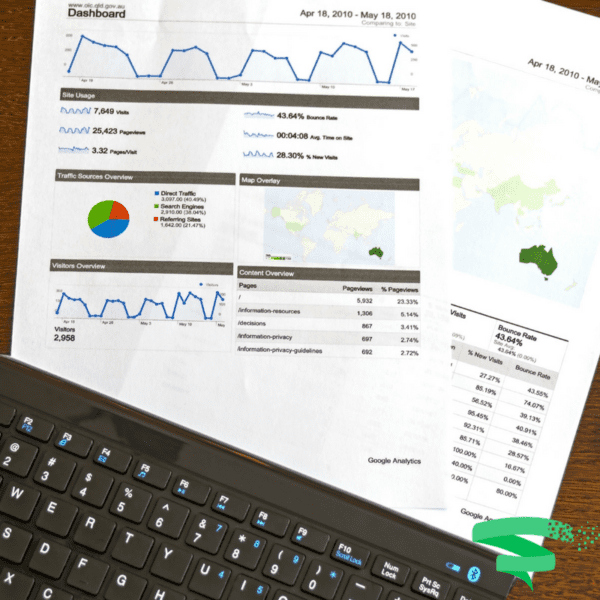Statistics, observed Aaron Levenstein, a former business administration professor at Baruch College, are like bikinis; what they reveal is suggestive, but what they conceal is vital. This memorable maxim applies to Adwords data as well. Its typical richness may well hint at groundbreaking insights, but it takes segmentation and reporting to uncover the priceless gems of actionable information you need to make decisions.
Click Performance Report
Click performance reports allow you to deduce how well selected ads and keywords engage the target audience. A high click rate indicates success, while low click performance shows the reverse. Using this record, you can gauge the relevance and effectiveness of your ad campaigns
.
There are several metrics you should observe. The first, enigmatically named “Impressions,” tells you how many times your ads have appeared on websites, search results pages, or other locations. The second, click rate, shows how many times people clicked on your ads. Keep a close eye on the clicks-to-impressions ratio; a low one is a sign your ads and keywords are not gaining traction with your audience. The last two metrics are conversion rate, which refers to the number of times your ads trigger the intended user responses, and return on investment, a measure of gain or loss.
Conversion Report
The conversions report tells you how well (or poorly) your ad campaign is performing. It shows the number of sales, sign-ups, downloads and leads generated after prospects interact with your ads. With this report, you can determine which ads bring the best results, calculate the return-on-investment of your ad campaign, and figure out whether the process that eventually leads to conversion starts and ends on different devices or platforms.
Conversion reports can also help you get the best bang for your advertising buck by providing the information you need to set up Smart Bidding, an automated process that leverages machine learning and your input to optimize bids for every auction.
Key metrics in the conversion report include converted clicks, which refers to the number of clicks that ended in conversions in a specified period, usually 30 days; click conversion rate, which is the ratio of converted clicks to total clicks; and total conversion value, which is an aggregate of all conversion values. Other critical metrics include click rate, total cost, number of conversions, cost per conversion, and cost per converted click.
Ad Performance Report
Ad performance reports provide you with a fine-grained view of your ad campaign, including data for individual ads. It lets you track the visibility of specific ads; the length of time they were visible; the number of clicks your ads attracted after they became visible; and the conversion-to-total click rate, among other measures. And because this report allows you to compare the performance of one ad against another, it can provide insights that can prove beneficial when you develop a new campaign.
As you go through the ad performance report, keep in mind that keywords, rather than ads, may have activated the impressions you see on record. Look for triggers, such as compelling calls to action or changes in pricing, that correlate to the crests and valleys you see in the report to figure out the exact cause of success or failure; the Search Query Performance report may also be a big help in this regard.
Search Query Performance Report
Imagine a scenario where a cake vendor sets a broad-matched keyword “cake” as the trigger for its ads; the network will serve up cake ads every time target customers perform a search incorporating the term. However, because the word is broad-matched, it can also trigger impressions for queries such as “caked in dirt” and “cakewalk,” or for synonyms such as “plaster” and “encrust.” If you were to rely on the Ad Performance report for analysis exclusively, there would be no way of knowing the precise words or phrases that activated your ads.
That is where the search query performance report, which shows performance data for the search queries that triggered your ads and got clicked, comes in. It not only allows you track the progress of your keywords but to also find out what other words or phrases triggered your ads. You can then add these keywords to your repertoire, or make them into negative keywords to further streamline your ad campaign.
Ad Group Performance Report
The ad group performance report aggregates performance data on your ad groups to provide you with a birds-eye view of one or more of your campaigns. This report shows metrics such as the click-through rate, which is the number of times your ads were clicked when they became visible; average ad position, which is a record of the location on a page where your ads appeared; cost per click; and cost per conversion. Keep your business objectives in mind when reviewing this report as it contains insights that can help you improve the performance of your campaign.
Demographic Performance Report
The demographic performance report shows ad performance data by attributes such sex and age. This report can be particularly useful if your products target specific cohorts or genders. For instance, if your firm purveys sports shoes for men, and you find out that your products tend to be particularly popular with young men 23 to 28 years old, you can adjust your campaign to focus more on this group and less on others. That means the bulk of your ad dollars will go toward the most profitable demographic. Some of the metrics that this report tracks include clicks, impressions, and conversions.
Geo Performance Report
Showing ad performance by location, geo performance reports offer incredibly useful insights if correctly used. For instance, by selecting the appropriate filters, you can find out where your ads have attracted the most significant attention, or determine the locations in which your customers have shown interest. These records also contain information on time zones, currency and ad formats, which means you can, for example, figure out if specific ad formats are more successful in some zip codes than others.
These reports come in two types. The geographic performance report proper shows ad trends conforming to the parameters “in, searching for, or viewing pages about my target location,” which means it also captures data on users who are outside your specified locale. If instead, you want to track ad performance in actual geographical locations, you should focus on the second type of record, the user location report.
While each of these reports is valuable on its own, you should view them as pieces of a large whole. Combined, they will give you a birds-eye perspective of the health, cost, profitability, and achievements of your ad campaigns, and provide you with the information you need to make adjustments where needed.











